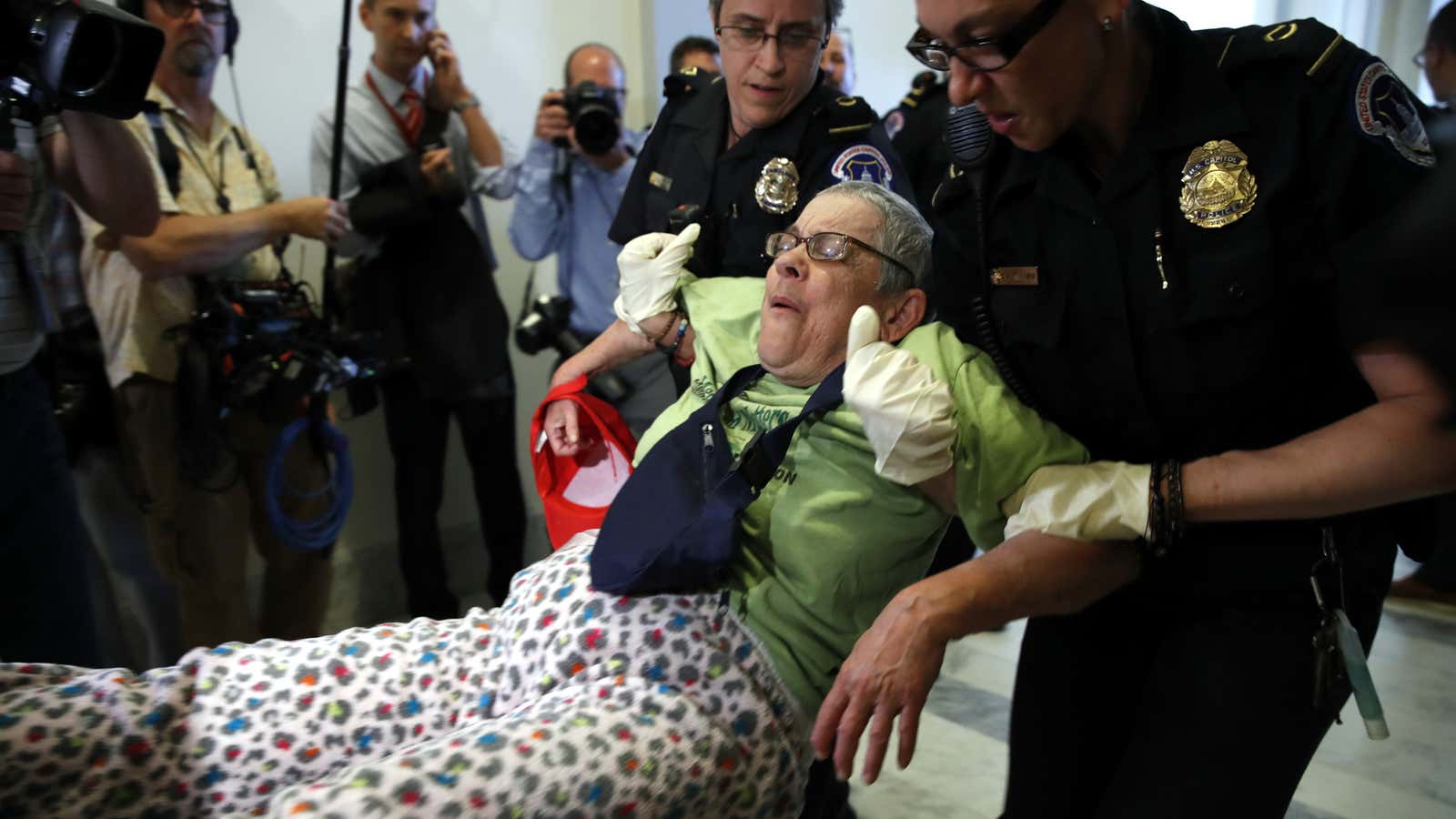The Republican attempt to re-write the US health-care system is the main story in Washington this week, and the focus is largely on how the bill cuts spending on Medicaid, the health program for poorer Americans. But the cuts will actually affect a far wider swathe of the country—potentially, anyone elderly who isn’t pretty wealthy, and their families.
The bill hangs in the balance on this issue. Some Republican lawmakers, like Nevada’s senator Dean Heller, say the cuts are too deep, while a band of ultra-conservative senators, including Rand Paul, Ron Johnson, Ted Cruz, and Mike Lee, say they don’t go far enough. (Democrats are universally opposed to the bill, written behind closed doors without any committee hearings or floor debate.)
Medicaid plays a huge role in providing for elderly Americans who have, in effect, outlived their savings. Data from the Kaiser Family Foundation show that in 2015, 62% of the more than 1.3 million Americans in skilled-nursing facilities paid for their stay and care with Medicaid dollars. Medicare, the program for the elderly, covered only 14% of them.
The Republican health-care bill would achieve its proposed cuts to Medicaid by capping the federal funds sent to states. Starting in 2025, the bill would peg growth in per-capita Medicaid spending to the general rate of inflation, not to the much-faster rate at which health-care costs are rising. This amounts to regularly cutting the program. With fewer effective funds and a growing population of seniors, states are likely to resort to paying less to health-care providers, from doctors to nursing facilities.
The prospect has prompted criticism from patient advocacy groups to insurers to state officials. Fewer people will be able to get care, according to the American Association of Retired People.
“We will have less resources to provide coverage for these folks [on Medicaid], which means we’ll have to reduce reimbursement for providers, and at that point we expect to see fallout from participating physicians,” John Baackes, the CEO of a California health insurer, told Modern Healthcare.
States would be ”really be forced to make a ‘Sophie’s Choice,’” Paula Hart, leader of a volunteer group that helps provide care to 8,000 seniors in Minnesota, said in the Minneapolis Star Tribune. “Do you not provide services to people? Do you cut the services they get? Do you cut rates to providers? None of those are good solutions.” And the organization representing the officials who administer Medicaid at the state level, in a statement today (pdf), called the bill “a transfer of risk, responsibility, and cost to the states of historic proportions.”
Those costs may in turn be pushed onto younger family members. Even middle-class Americans with relatively solid savings (paywall) can deplete them if they have to spend years dealing with illness or living in a care facility.
This map shows where elderly Americans are eligible for both Medicare and Medicaid.
It’s not dissimilar from a map we published last week, which depicted the overlap between people eligible for Medicaid and Trump voters. Many of them are in states that were critical to Trump’s election. It’s possible they believed his repeated promises not to cut Medicaid, Medicare or Social Security. But now Medicaid is on the chopping block, and Trump seems quite prepared to sign the bill.
